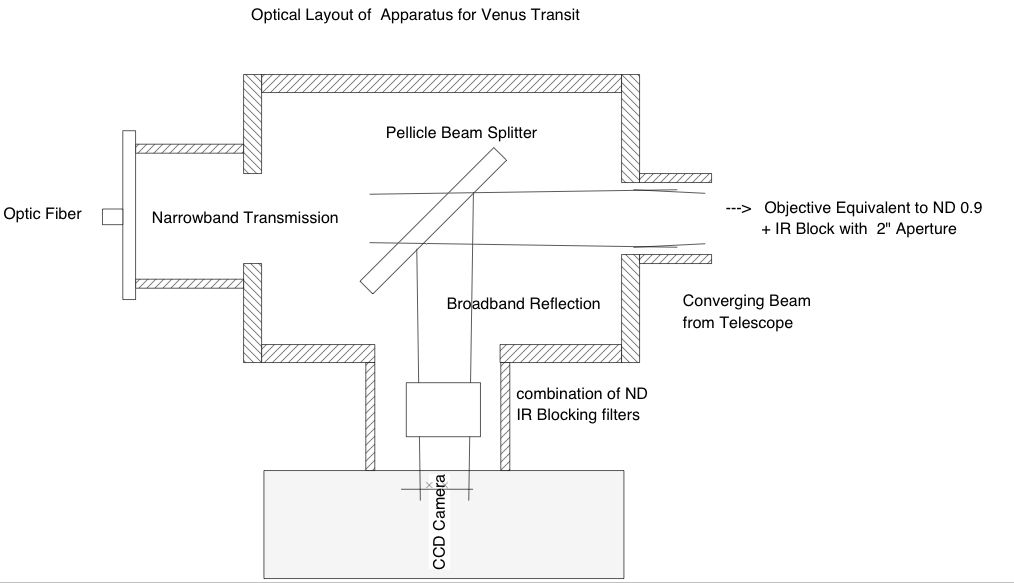08 JUNE 2004 - TRANSIT OF VENUS
INSTRUMENT SETUP IN THESSELONIKI, GREECE
Latitude = 22° 57.5'N , Longitude = 40° 37.0'E,
Local Time = UT + 3 hours
Local Altitude (Zenith up)/Azimuth (increasing to the
right) Graphics
Glenn Schneider, Steward Observatory, University of Arizona
Photographs & Graphics from Bryce Babcock, Williams College
Simultaneous grating spectroscopy centered at 530 nm and broadband (adjacent)
continuum CCD imagery of the transit of Venus is planned. The spectrograph/imaging
instrument module will be hosted on the Aristotileon University's Secretian
refracting telescope. The module employs a spectral pelical beam
splitter to transmit a narrow wavelength region to the spectrograph while
reflecting the adjacent broad continuum to a CCD imager.

Here, an Apogee CCD imager (left) replaces the fiber-feed for the grating
spectrograph for alignment and focus testing along with an SBIG CCD imager
used for guiding (bottom). Both are coupled to the housing which holds
a beam splitter (and beam attenuating optics) under test at Hopkins Observatory,
Williams college.

Schematic representation of the beam splitting module.
Why 530 nm? The spectrograph was optimized for observations of
solar coronal 5303 Angstrom line emission. Serendipitously, various
allotropes of Sulfur, which might be found in the upper atmosphere of Venus
(above the optically thick C02 haze layer) absorb optical radiation at
nearly the same wavelength. Schneider will be attempting to detect
a signature of sulfurous absorption differentially in the solar spectrum
(in and out of transit) as reflected off of the Moon (using a spectrophotometer
on the Steward Observatory 2.3 meter Bok telescope at Kitt Peak).
By observing sunlight in reflection, the entire area integrated spectrum
of the Sun is seen at once - mimicing the spatially unresolved spectrum
of an extraosolar planetary transit, and testing the ability to detect
a "Venus" around another star by this method. The direct spectroscopy
with the above instrumental set-up will be obtained while tracking the
Sun, allowing Venus to drift across a 3" FOV, and obtaining drift-scan
spectra across the disk (and atmosphere) of the planet as it transits the
Sun.

